Eating fruit and vegetables raw is sometimes the healthier option. … However, while cooking may cause the loss of some valuable nutrients, like vitamin C, there are some vegetables which offer useful health benefits when they’re cooked.
These include carrots, asparagus and even tomatoes, because cooking makes it easier for our bodies to benefit from some of their protective antioxidants, specifically ferulic acid from asparagus, and beta-carotene, which we convert to vitamin A, from carrots. Similarly, when you cook tomatoes – whether you roast them slowly or make a cooked sauce – it helps to break down the plant cell walls, allowing us to better absorb the antioxidant lycopene. All these nutrients help to safeguard our cells from environmental damage, may protect us from certain cancers and are heart-friendly.
Although some nutrients are sensitive to heat there are others, like the fat-soluble vitamins (A, D, E and K), which are unaffected. So whether you choose to eat your fruit and vegetables raw or cooked follow these tips to get the most out of them: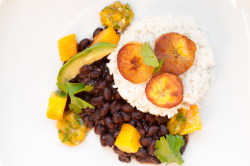
On the other hand, there are certainly some veg, which benefit from being eaten raw. These include broccoli and watercress. When these veg are heated an important enzyme is damaged, which means the potency of helpful anti-cancer compounds called glucosinolates, are reduced. Similarly, cooking makes the herb garlic less potent because heat reduces the amount of health-promoting allicin, so it’s best to add your garlic just before you finish cooking rather than at the start. For those watching their weight, eating some fruit and veg raw can help fill you up because raw fruit and veg tend to be bulkier and have higher water content.
Interestingly, some vitamins are lost when food is cooked, while others become more available for your body to use. Some claim that eating primarily raw foods is the path to better health. However, certain cooked foods have clear nutritional benefits. A strict raw-food diet is very difficult to follow, and the number of people who stick to a completely raw diet in the long term is very small.
Furthermore, some foods contain dangerous bacteria and microorganisms that are only eliminated by cooking. Eating a completely raw diet that includes fish and meat comes with a risk of developing a food-borne illness. When you consume a food, digestive enzymes in your body help break it down into molecules that can be absorbed .The food you eat also contains enzymes that aid digestion. Enzymes are heat sensitive and deactivate easily when exposed to high temperatures. In fact, nearly all enzymes are deactivated at temperatures over 117°F (47°C). This is one of the primary arguments in favour of raw-food diets. When a food’s enzymes are altered during the cooking process, more enzymes are required from your body to digest it.
Broccoli is loaded with vitamin C, calcium, potassium, and protein. Moreover, it contains the compound sulforaphane, which is found to fight cancer cells, lower blood pressure, and improve heart health. A study published in the Journal of Agricultural and Food Chemistry found people who consume raw broccoli absorbed sulforaphane more quickly and in higher amounts compared to those who ate cooked broccoli. Sulforaphane can be diminished by certain heat preparations, but not all.
“Steaming and baking broccoli does not seem to have any real significant reducing effects on the sulforaphane levels, while boiling can reduce its level by up to 70 percent.” Broccoli also contains goitrogens — sulfur compounds which can reduce thyroid hormone production — but when the vegetable is cooked, goitrogens becomes unstable. This negates its effects on inhibiting the thyroid’s capacity of producing hormones. Proponents of raw-food diets claim that this puts stress on your body and can lead to enzyme deficiency. However, there are no scientific studies to support this claim.
Some scientists argue that the main purpose of food enzymes is to nourish the growth of the plant not to help humans digest them. Furthermore, the human body produces the enzymes necessary to digest food. And the body absorbs and re-secretes some enzymes, making it unlikely that digesting food will lead to an enzyme deficiency .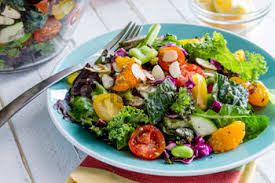
Some nutrients are easily deactivated or can leach out of food during the cooking process. Water-soluble vitamins such as vitamin C and the B vitamins are particularly susceptible to being lost during cooking. In fact, boiling vegetables may reduce the content of water-soluble vitamins by as much as 50–60%. Some minerals and vitamin A are also lost during cooking, although to a lesser extent. Fat-soluble vitamins D, E and K are mostly unaffected by cooking.
Boiling results in the greatest loss of nutrients, while other cooking methods more effectively preserve the nutrient content of food. Steaming, roasting and stir-frying are some of the best methods of cooking vegetables when it comes to retaining nutrients. Lastly, the length of time that a food is exposed to heat affects its nutrient content. The longer a food is cooked, the greater the loss of nutrients, however, cooked food may be easier to chew and digest.
Chewing is an important first step in the digestive process. The act of chewing breaks down large pieces of food into small particles that can be digested. Improperly chewed food is much more difficult for the body to digest and can lead to gas and bloating. Additionally, it requires significantly more energy and effort to properly chew raw foods than cooked food. The process of cooking food breaks down some of its fibres and plant cell walls, making it easier for the body to digest and absorb the nutrients. Cooking also generally improves the taste and aroma of food, which makes it much more enjoyable to eat.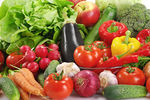
Although the number of raw food enthusiasts who consume raw meat is small, meat is easier to chew and digest when it’s cooked. Cooking grains and legumes properly not only improves their digestibility, but it also reduces the number of anti-nutrients they contain. Anti-nutrients are compounds that inhibit the body’s ability to absorb nutrients in plant foods. The digestibility of a food is important because your body can only receive a food’s health benefits if it’s able to absorb the nutrients.
Some cooked foods may provide the body with more nutrients than their raw counterparts because they are easier to chew and digest. Cooking Increases the Antioxidant Capacity of Some Vegetable Studies have shown that cooking vegetables increases the availability of antioxidants like beta-carotene and lutein. Beta-carotene is a powerful antioxidant that the body converts into vitamin A.
A diet rich in beta-carotene has been associated with a reduced risk of heart disease .The antioxidant lycopene is also more easily absorbed by your body when you get it from cooked foods instead of raw foods . Lycopene has been associated with a decreased risk of prostate cancer in men and lower risk of heart disease.
One study found that cooking tomatoes reduced their vitamin C content by 29%, while their lycopene content more than doubled within 30 minutes of cooking, also, the total antioxidant capacity of the tomatoes increased by over 60%. Another study found that cooking increases the antioxidant capacity and content of plant compounds found in carrots, broccoli and zucchini. Antioxidants are important because they protect the body from harmful molecules called free radicals. A diet rich in antioxidants is associated with a lower risk of chronic disease .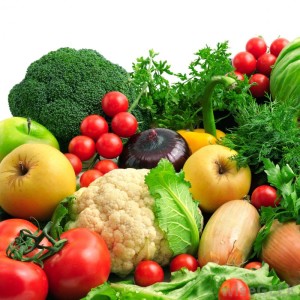
Cooking Kills off Harmful Bacteria and Microorganisms. It is better to eat certain foods cooked, as raw versions may contain harmful bacteria. Cooking food effectively kills bacteria that may cause food-borne illness. However, fruits and vegetables are generally safe to consume raw, as long as they have not been contaminated. Spinach, lettuce, tomatoes and raw sprouts are some of the fruits and vegetables most frequently contaminated by bacteria.
Raw meat, fish, eggs and dairy often contain bacteria that can make you sick. E. coli, Salmonella, Listeria and Campylobacter are some of the most common bacteria that may be found in raw foods. Most bacteria cannot survive at temperatures over 140°F (60°C). This means that cooking effectively kills bacteria and reduces the risk of food-borne illnesses. Commercially produced milk is pasteurized, which means it has been exposed to heat to kill any harmful bacteria it may contain. It is not recommended to consume raw or under-cooked meat, eggs or dairy. If you do choose to eat these foods raw, make sure your food is fresh and purchase it from a trusted source. Neither a completely raw nor completely cooked diet can be justified by science. That’s because both raw and cooked fruits and vegetables have various health benefits, including a lower risk of chronic diseases .The truth is that whether food should be consumed raw or cooked may depend on the food. Here are a few examples of foods that are either healthier raw or healthier cooked: Garlic: Sulfur compounds found in raw garlic have anti-cancer properties. Cooking garlic destroys these sulfur compounds.
Foods That Are Healthier Cooked
Asparagus: Cooking asparagus breaks down its fibrous cell walls, making folate and vitamins A, C and E more available to be absorbed. Mushrooms: Cooking mushrooms helps degrade agaritine, a potential carcinogen found in mushrooms. Cooking also helps release ergothioneine, a powerful mushroom antioxidant. Spinach: Nutrients like iron, magnesium, calcium and zinc are more available for absorption when spinach is cooked. Cooking spinach also helps destroy goitrogens that may interfere with the functioning of your thyroid gland.
Tomatoes: Cooking greatly increases the antioxidant lycopene in tomatoes. More lycopene is absorbed when black pepper is added to the tomato.
Carrots: Cooked carrots contain more beta-carotene than raw carrots.
Potatoes: The starch in potatoes is nearly nearly indigestible until a potato is cooked.
Legumes: Raw or under-cooked legumes contain dangerous toxins called lectins. Lectins are eliminated with proper soaking and cooking.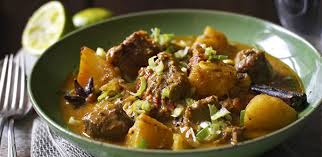
Meat, fish and poultry: Raw meat, fish and poultry may contain bacteria that can cause food-borne illnesses. Cooking these foods kills harmful bacteria. Some foods are better to eat raw, and some are healthier when cooked. Eat a combination of cooked and raw foods for maximum health benefits. Some foods are more nutritious when eaten raw, while others are more nutritious after being cooked. However, it’s unnecessary to follow a completely raw diet for good health. For the most health benefits, eat a variety of nutritious raw and cooked foods.
Broccoli
This dark green vegetable is loaded with vitamin C, calcium, potassium, and protein. Moreover, it contains the compound sulforaphane, which is found to fight cancer cells, lower blood pressure, and improve heart health. A study published in the Journal of Agricultural and Food Chemistry found people who consume raw broccoli absorbed sulforaphane more quickly and in higher amounts compared to those who ate cooked broccoli. Sulforaphane can diminished by certain heat preparations, but not all. Steaming and baking broccoli does not seem to have any real significant reducing effects on the sulforaphane levels, while boiling can reduce its level by up to 70 percent. Broccoli also contains goitrins — sulfur compounds which can reduce thyroid hormone production — but when the vegetable is cooked, goitrin becomes unstable. This negates its effects on inhibiting the thyroid’s capacity of producing hormones..
Coconut in its raw state provides a plethora of nutritional benefits compared to the dried form. Drinking coconut water has been comparable to a sports drink because of its naturally hydrating ability and high levels of electrolytes, according to a 2007 study published in the Southeast Asian Journal of Tropical Medicine and Public Health. Coconut water is also rich in sodium, potassium, and magnesium. Dried coconut or sweetened coconut does not provide the same benefits.
Red peppers contain a surprisingly high amount of vitamin C, or 150 percent of the recommended daily value. The National Institutes of Health does warn if it’s cooked above 375 degrees, this can break down its nutritional value. “Vitamin C is heat sensitive, so it will start to degrade at high temps as well as when exposed to light and air. It doesn’t completely destroy the vitamin C, though. When cooking peppers, it is better to quickly sautée or grill them briefly to help preserve the vitamin C.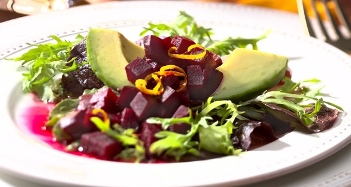
Foods that are Better Cooked
1. Carrots
You know carrots are good for your eyes, but do you know why? It’s a compound called beta-carotene, which gives carrots their deep orange hue. Beta-carotene is converted into vitamin A in the body, which is essential for things like—you guessed it!—good vision (along with immune health and healthy skin). In 2002, researchers found that cooking carrots actually increases the amount of beta-carotene your body is able to absorb.
2. Tomatoes
Tomato sauce, tomato paste, ketchup—chances are that you eat plenty of cooked tomatoes. But if you don’t, now would be a good time to start. If you’re limiting yourself to fresh tomatoes, then you’re only getting about 4% of the powerful antioxidant lycopene that this vegetable- like fruit has to offer, according to research published in the International Journal of Food Sciences and Nutrition. That’s because raw tomatoes have thick cellular walls that make it difficult for our bodies to absorb lycopene. Once they’re cooked, however, the lycopene becomes much easier for our bodies to utilize.
3. Spinach
Folate is a B vitamin essential for cell growth and reproductive health that’s found in dark leafy greens. While cooking spinach doesn’t increase folate levels, a 2002 study found that steaming spinach keeps folate levels constant. Why is that good? “A whole bunch of spinach wilts down to just a little bit,” she says. “So you’re going to eat a lot more of it after it’s cooked.” And thus, consume more folate as a result.
4. Asparagus
These green stalks are super high in cancer-fighting vitamins like A, C, and E, as well as folate. But the thick cell walls make it hard for our body to absorb these healthy nutrients. Cooking asparagus breaks down its fibrous cells so that we can absorb more of the vitamins.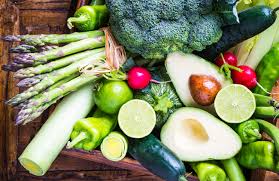
5. Pumpkin
We know eating raw pumpkin isn’t exactly normal. And that’s a good thing, since cooked squash is incredibly more nutritious than raw (including other kinds of squash like zucchini and acorn). Pumpkin, like carrots, is rich in antioxidants like beta-carotene, which are much easier to absorb once it has been heated. “Something like a can of cooked pumpkin puree is off the charts in terms of nutrition. Research shows that the absolute best method for cooking veggies is boiling, but not in a big pot of water like you would pasta. Cook your vegetables whole. This not only retains flavour but can also provide up to 25% more nutrients than vegetables that were cut before cooking. Add a little fat. Healthy fats like olive oil, avocado oil, or flaxseed oil actually increase your body’s ability to absorb key nutrients.Though there are a few exceptions (nutrients like lycopene, beta-carotene, and some polyphenols actually become more bio-available when cooked), a quick turn in the microwave is hard to beat. In fact, a recent Harvard Medical School report plainly states that microwaving “keeps more vitamins and minerals than almost any other cooking method.” ???
Disclaimer: The contents of this website are not intended to replace a one to one relationship with your health practitioner nor are they meant as medical advice. You are encouraged to do your own research and make your own decisions in partnership with your medical practitioner.
